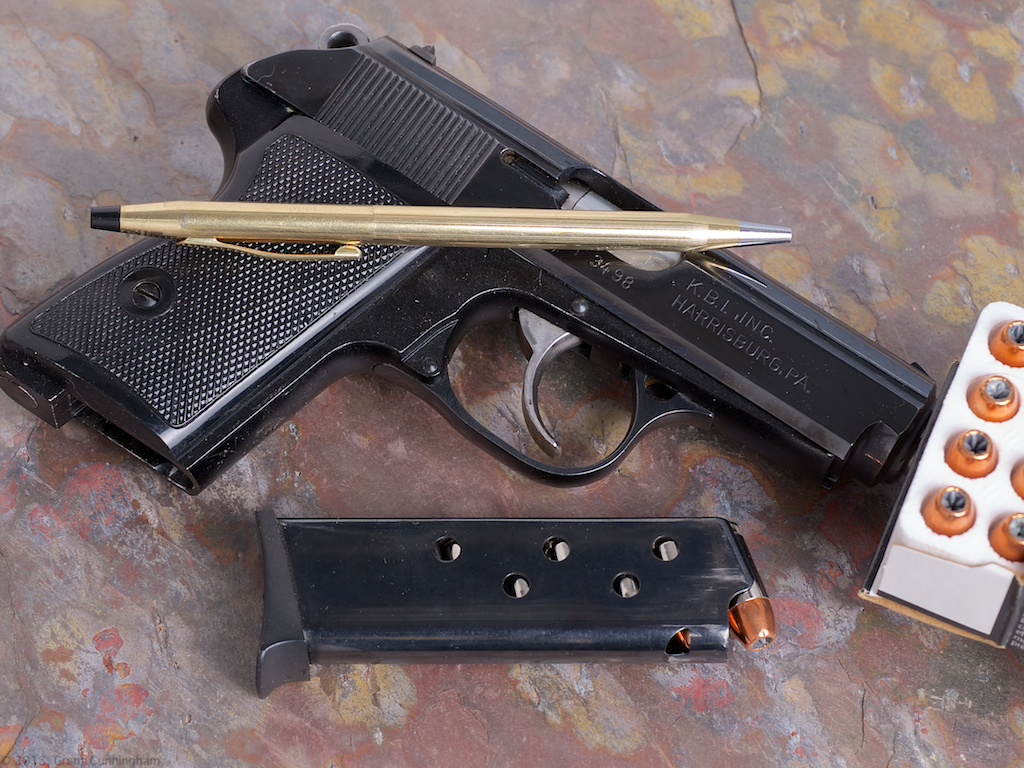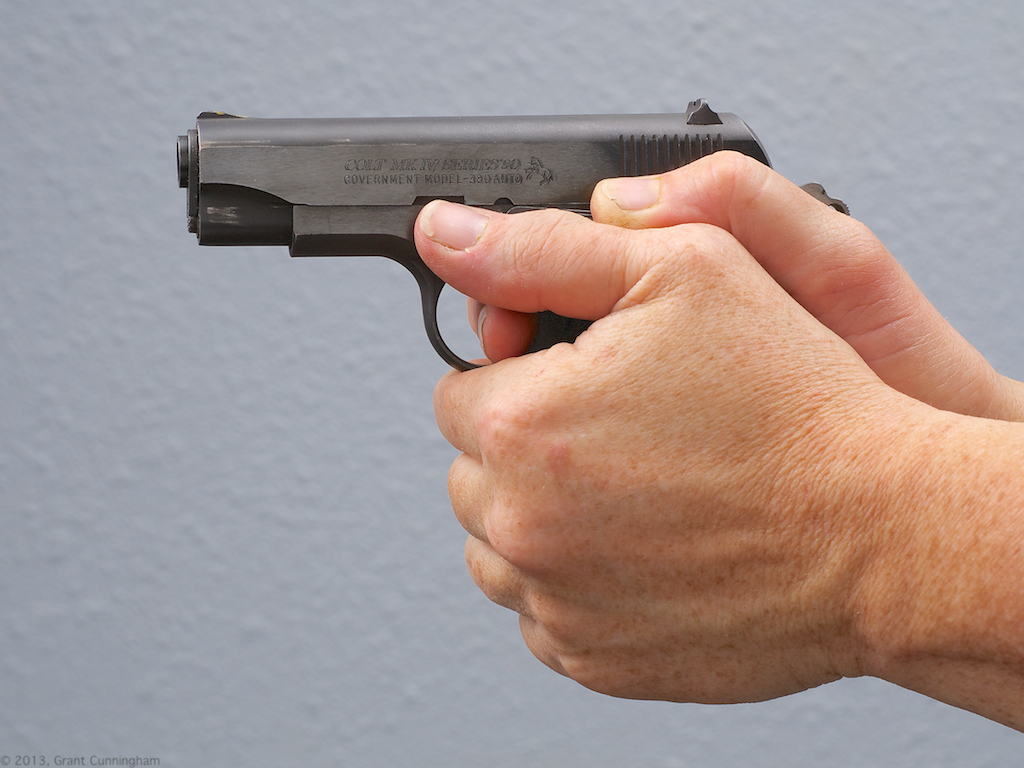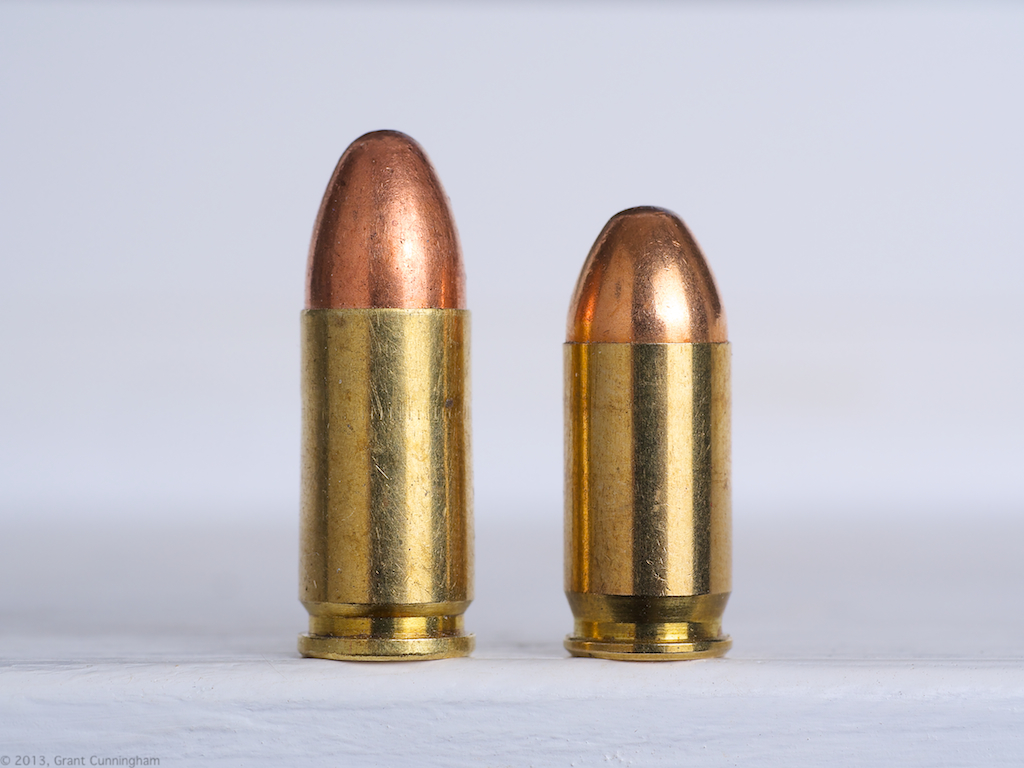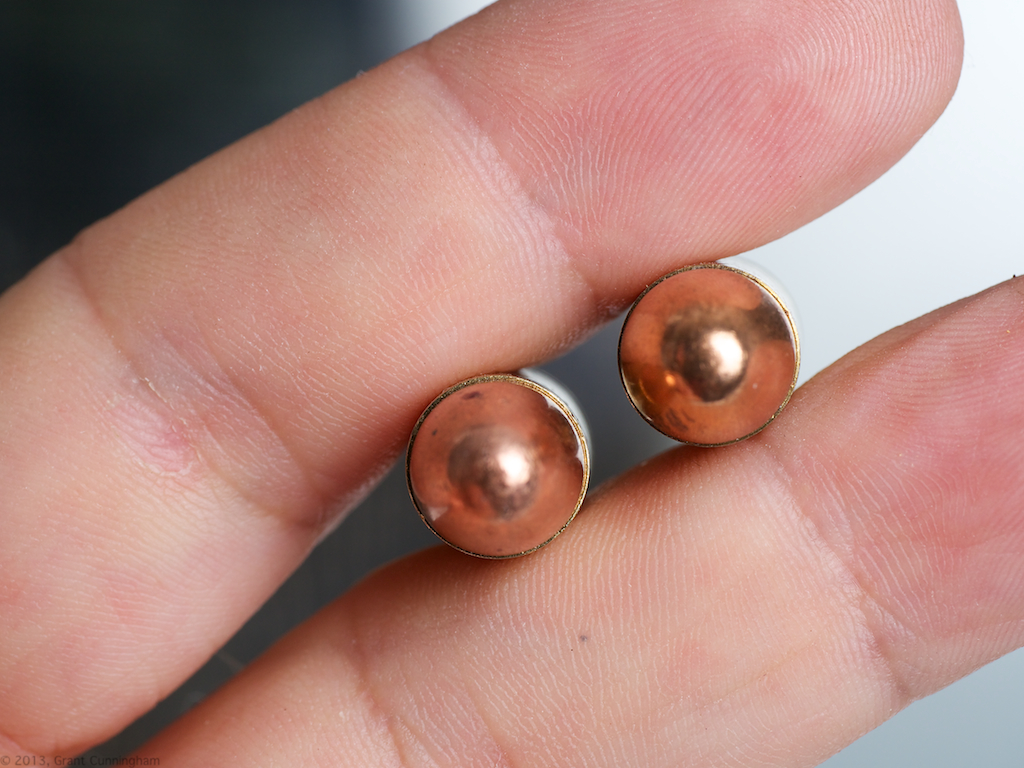Should it be?

Best Personal Defense Weapon
Just Because It’s Common Doesn’t Make It Wisdom
The common wisdom goes something like this: the .380 doesn’t have much stopping power, making it a less ideal choice than the next step up the ladder, the 9mm. I’ve even heard people say that if you were to shoot an attacker with a .380, all you’d succeed in doing is making him mad!Since modern 9mm pistols are so small these days, often very close to the size of the lowly .380, most gun folks would say that it makes little sense to bother with the mouse cartridge. If you can get a more powerful round in the same-sized gun, they’ll ask, why bother with the smaller offerings?
It Isn’t As Weak As You Think
Let’s get the performance questions about the .380 ACP out of the way so we can have an intelligent discussion. While I’m not here to heap excessive praise on the .380, or even suggest that it should be your primary choice for carry, let’s start by looking at the data.Is the .380 half as good as the 9mm? If the data is accurate, it’s actually better than that.
Facts, as John Adams pointed out, are stubborn things. The important point here is that, despite what we feel or have been told, the .380 ACP is not the complete weakling everyone would have you believe. I’ve personally met two people who successfully defended themselves with a .380. Both incidents were over within three rounds, and both defenders emerged unscathed. The same could not be said of their attackers, neither of whom are with us any longer.
Balance of Speed and Precision
The answer is more complicated than you might think, and revolves around your balance of speed and precision. The target dictates the level of precision you need to reach, and that part of the shooting equation never changes. The variable is how fast you can deliver rounds into that area. The more recoil the gun/cartridge combination produces, the slower you’ll be able to shoot into that level of precision. This is the balance of speed (your ability to shoot multiple rounds accurately) and precision (the area of the target you must hit).The less recoil you are forced to deal with, the faster you’ll be able to shoot to any given level of precision. That translates into being able to deliver more rounds on target in a specific time frame. In the case of an attacking criminal, the more rounds you can put into his vital areas, the sooner he’s going to stop being a threat to your life.
So What If It Hurts?
This is why so many major defensive shooting trainers have come to embrace the 9mm over the .40 S&W and .45 ACP: you’re able to deliver more statistically identical performing rounds in any given period of time to any given level of precision. It’s a great tradeoff, because there’s almost no downside. Given a choice between shooting the bad guy three times with one caliber or five times with a different caliber that has been shown to give statistically indistinguishable performance, I know which I’m going to choose!Where does the .380 ACP come into this?
If we take two guns of roughly the same size and weight, one in .380 and one in 9mm, the 9mm will recoil more than the .380. This is to be expected. A markedly heavier bullet, fired at a higher velocity, will produce substantially more recoil and will more obviously affect your balance of speed and precision. It’s also going to be painful to practice with, which means people might not do so.

This small Walther-esque .380 ACP has an aluminum frame and would be much more difficult to control if chambered in 9mm. Loaded with high-performance ammunition, it can be surprisingly effective.
Photo: author
This is the root of the decision we face with the choice between 9mm and the .40 S&W. In that case, the performance of the rounds is much closer—a statistical dead heat, remember—so it becomes a choice of shooting more bullets of equal effect than fewer bullets. More bullets win, because it’s the number of rounds we can get on target that have the greatest effect on an attacker.
Making a Logical Choice
The recoil effects in a small gun are profound. A number of micro 9mm pistols I’ve tested range from quite unpleasant to downright uncontrollable in a realistic string of fire. A gun of the same size but loaded with softer-shooting .380 projectiles is much easier to control and results in more rounds landing accurately on target in a shorter period of time. We’re back to the idea of shooting more rounds to any given level of precision.Of course, the difference in this choice is that the .380 is definitely not at the same performance level of the 9mm. We’re giving up some effectiveness, though as I pointed out, it might not be as much as we’ve been led to believe. But when we factor in the controllability of the gun, the smart choice for some people may very well be the smaller round.
As mentioned earlier, I’ve fired some micro 9mm guns that were very difficult to control. In fact, I tested one such gun that squirmed in my tightest grasp so much that the first round was on target, the second was on the right side of the target, and the third was off target! Admittedly I’m no Jerry Miculek, but I’m used to shooting very heavy-recoiling handguns at speed, and this particular pistol was impossible for me to control in a realistic string of fire. No one else on the range that day could either, and these weren’t newbies but experienced shooting instructors!
Still, I was the only one who came away with a negative opinion of the test gun. If I shot sedately, as everyone else who tested and proclaimed the gun to be a “winner” did, it was controllable. It wasn’t until I shot it in a realistic string of fire (rapid multiple rounds) that it showed its less desirable traits. In my hands it was just difficult to control, but in the hands of someone who doesn’t have my experience and skill, the results might be tragic: missed shots and endangered bystanders.
The problem is that these are the kinds of guns too often sold to newcomers. They’re touted as small, light, and “packing a punch.” Buyers are told they shouldn’t settle for a “weak” .380 ACP of similar size when they can step up to a 9mm in the same (or nearly the same) package. It’s a good sales tactic, I must admit!
Still, I caution people to think very carefully about that neat new subcompact. “It packs more power in a smaller, lighter frame” is seductive advertising copy, and a lot of gun reviewers get very excited about such things, but it’s important to think through the ramifications of that choice.

This .380, which its owner can control, making rapid combat-accurate hits, is a better choice for her than a similar-sized 9mm that she may not be able to control. Photo: author
www.personaldefensenetwork.comAm I Saying the .380 Is Always a Better Choice?
No, I’m not. But in some very specific cases, it may be. The shooting world should stop and think about the end use of the gun, not how much raw power it produces.Back when I was of the “More power!” persuasion, I met a lady who carries a Browning BDA. The BDA is a double-stack .380 ACP pistol holding 13 rounds. It is, as you might expect, fairly large and heavy for a .380. At the time the micro-9mm fad hadn’t yet started, but even then there were a number of 9mm pistols available that were the size of the BDA and lighter to boot. I actually tried to steer her away from her BDA and to one of the 9mm guns, but she wouldn’t hear of it. She’d tried them and, due to some weakness in her hands, simply couldn’t control them (even with my expert instruction).
For her, being able to deliver all 13 rounds on target in a very short time frame (which she could do) was a significant advantage over delivering only a few 9mm rounds. My mistake was not recognizing that. Thankfully, I failed to get her to change. She knew her needs better than I did, and if we were to have that discussion today, I would simply help her become as competent with her gun as I possibly could. I understand the issues better and have reined in my macho opinions.
If I had to choose between a micro 9mm and a .380 in the same size and weight class, I might choose the smaller round if the difference in controllability were significant. In the case of the test gun I mentioned earlier, I’d frankly rather have a .380! Yes, it was that bad. Yet the gun sells well and the manufacturer reports they can’t keep up with demand. I’m positive that many of those buyers are making a bad decision, and probably for the wrong reasons.
Before you sneer at that lowly mousegun, stop and really think about the job it is intended to do. Understand the real task: to get combat-accurate hits, with an effective bullet, on target as fast as you can get them. In some cases, that “little” .380 might be better at the task than anything else.




Unfortunately, there's no way that I know of to try both before deciding what to buy. Any suggestions?
I've been a proponent of larger calibers for years. As a cop I've carried .357 magnum, 9mm (in the early 80's), .45 for several years, loved my 1911 until I worked somewhere that wouldn't let me carry "cocked and locked", and now .40 S&W. Looking for a gun for my wife and several people, both family and gun shop "experts" are trying to get me to go with .380 for her. My chief want's me to move down to 9mm myself. I'm considering al of it.
Have baby Glock .380. Only weapon that I can carry comfortably in almost any attire and if it isn’t comfortable I’m sorry I just won’t carry it regularly on my person. I wear a suit a lot so my weapon can’t be bulky or bulging and I have to be able to move normally. This is the only weapon sleek enough to allow normal comfort and conceal ability. As such it is part of my daily routine. If it’s not comfortable one makes excuses to leave it at home or in the car
Thank you for thus article. I currently have a 9mm Hellcat but have avoided carrying because it's not so comfortable. I recently shot the new S&W Bodyguard 2.0 which is significantly smaller and lighter. I did not give up accuracy, just caliber, to your point. And, I'm more likely to carry it because it's lighter and smaller. A gun can only help you if you have it with you!. Thank you again. Adam
No comment mines were good
Good info. Having taught for over 20 years in the military. 9 vs 380. Take a look at your average engagement range and the background of its possible use. I live in a close neighborhood average expected range of engagement no more than 7 yards with fencing covering the back and brick in the front. What happens if you miss? Where is that heavier caliber round going? My 380 is accurate , can do it’s intended job. Minimize collateral damage. Thanks for keeping it real.
Great article. I just purchased my first 380 caliber handgun because I've made it into my 80s and do not have the hand and arm strength I once had. I took my new Ruger Security 380 to the range along with a carry gun I use - SCCY CP2 9 mm - to test them side by side, as I expected that accurate shot placement in multi-round strings would be more practical with the Security 380 than the SCCY 9 mm. I had not expected the difference to be so pronounced!
Exactly, Mr. Scotto and Mr. Cunningham! A well placed shot wins the battle...whether it is with a BB shot or a .380 or a .223, etc. Especially for women who struggle with concealment challenges, handling strength regarding both gun weight and recoil, and our nasty habit of putting everything else at a higher priority that practicing with live fire. I depend on my Glock 42 (.380 cal.) as my car and carry, but have .9mm and .45 for in the house. And, I practice monthly!
100% agree with the author. The ability to put rounds on target is so much more important than the size of the round. The ability to control recoil permits more rounds on target in a shorter time. I have had clients with arthritis or other conditions that created difficulty in manipulating and firing a weapon who I suggested avail themselves of a .380 and even a .22LR handgun. Any weapon that someone can control and successfully use is better than one they cannot control or won't use.
This was well written. I expected to hear all the reasons why a .380 is a fools errand, but this was balanced and enjoyable. I own a half dozen pistols from .45 to .380. I have a 9mm in my truck, but the Bersa Thunder hides in my pocket and it goes everywhere. It's one of my "boring" guns that doesn't surprise the heck out of you when you fire it. With continued practice I just get more accurate with it and feel comfortable with the thought that well placed shots will win the fight.